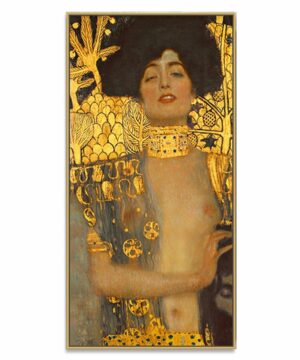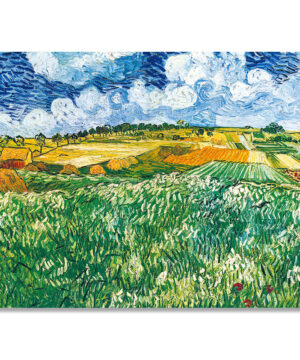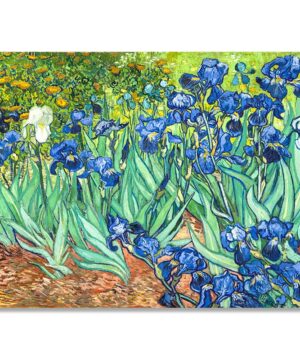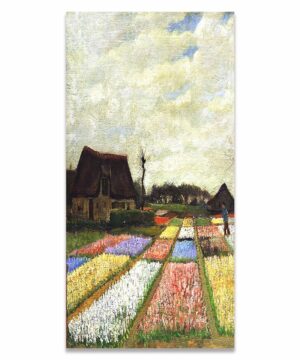Vincent van Gogh started paintingPainting is a fundamental form of visual art that has been practiced for thousands of years. It involves applying pigment to a surface such as canvas, paper, or a wall. Painting can be explored through various styles, techniques, and mediums, each offering unique possibilities for expression and creativity. Historical Background • Ancient Beginnings: The history of painting dates back to More late and died young. However, over a period of 10 years, he was able to complete almost 900 paintings, over 1,100 sketches, and lithographs. Some motives keep reappearing in his artwork, among them sunflowers, cypress trees, wheat fields, and vast landscapes, which he turned to time and again.
When Was Wheat Field with Cypresses Created?
This picture “Wheat Field with Cypresses” is one of van Gogh’s most famous paintings and one among three similar works the artist created in 1889 as part of his wheat field series. As with so many of his artworks, these series have left us with numberless questions. Art historians widely consider the wheat fields to have been borne out of van Gogh’s religious beliefs, his strong connection to nature, and his desire to provide relief to others.
Where is the picture “Wheat Field with Cypresses” today?
Vincent van Gogh’s original paintingPainting is a fundamental form of visual art that has been practiced for thousands of years. It involves applying pigment to a surface such as canvas, paper, or a wall. Painting can be explored through various styles, techniques, and mediums, each offering unique possibilities for expression and creativity. Historical Background • Ancient Beginnings: The history of painting dates back to More “Wheat Field with Cypresses”(June 1889) is part of the permanent collection of the Metropolitan Museum of Art, New York City.
What’s in it? Wheat Field with Cypresses Analysis
The visual elements of van Gogh’s wheat field with cypresses show vast fields of ripe wheat in front of the Alpilles mountains, with dense Provencal cypresses the artist painted towering like an obelisk to the right, surrounded by bosky olive trees. White clouds are swirling above in an azure blue sky, painted using expressive and emotive brushstrokes in brisk application of impastoed paint. As in many other pictures, many objects such as the mountains and the plants are outlined using dark colour in imitation of Japanese woodblock prints. The overall appearance of the picture is light and dynamic.
What’s the context?
Van Gogh Facts:
Due to attacks of mental instability, Vincent van GoghVincent van Gogh (1853 – 1890) is one of the renowned Post-Impressionist artists, best known for his striking use of colour, emphatic brushwork, and contoured forms. As a son of a pastor, the Dutch artist war brought up in a religious and cultured atmosphere. After working unsuccessfully as a clerk at a bookstore, as a salesman, and as a preacher More had to spend one year in the mental asylum in Saint-Rémy-de-Provence. Nonetheless, the Dutch artist was highly productive in this phase of his life, creating around 150 paintings in just one year. Vincent van Gogh’s picture “Wheat Field with Cypresses” is thought to have been inspired by the view from his cell in the mental asylum.
Similarities Between Starry Night and Wheat Field with Cypresses
Vincent van Gogh’s masterpieces, “Starry Night” and “Wheat Field with Cypresses,” share striking similarities that illuminate the artist’s unique style and emotional depth. Both paintings, created around the same period, exhibit van Gogh’s signature swirling brushstrokes, which lend a dynamic, almost turbulent energy to the scenes. This technique is particularly evident in the sky of “Starry Night” and the cypress trees of “Wheat Field with Cypresses,” where the swirling patterns convey a sense of motion and vitality. The use of vibrant, contrasting colors is another common feature; the vivid yellows and blues in “Starry Night” resonate with the intense greens and blues of “Wheat Field with Cypresses.”
Additionally, both artworks reflect van Gogh’s deep connection with nature and his tendency to infuse landscapes with emotional and symbolic meanings, whether depicting the calm of a starlit night or the vitality of a wind-swept field. These similarities underscore van Gogh’s exploration of nature’s power and beauty, as well as his consistent thematic and stylistic approach during this period of his career.
Cultural Significance of “Wheat Field with Cypresses”
Chatter and Prattle
- Van Gogh created the original “Wheat Field with Cypresses” when he was able to leave the asylum since his mental state seemed more stable. However, just a few months later he committed suicide.
- The artist’s paintings were full of symbolic meaning. Some art historians argue, the picture “Wheat Field with Cypresses” was predictive of the artist’s suicide: Wheat with its underlying meaning for nourishment and life contrasted with the cypress tree with its allegorical meaning of death. In one of his letters to his brother Theo, van Gogh wrote: “What can a person do when he thinks of all the things he cannot understand, but look at the fields of wheat… We, who live by bread, are we not ourselves very much like wheat… to be reaped when we are ripe.”
How much did wheat field with cypresses sell? The Wheat Field with Cypresses at the Haute Galline Near Eygalieres was sold to the MOMA in the year 1993 for a sum of $57 million.
Recommended Readings:
This article may contain compensated links. Please read Disclaimer for more info. As an Amazon Associate, I earn from qualifying purchases.
Ingo F. Walther et al. (2020): Van Gogh. The Complete Paintings
Vincent Van GoghVincent van Gogh (1853 – 1890) is one of the renowned Post-Impressionist artists, best known for his striking use of colour, emphatic brushwork, and contoured forms. As a son of a pastor, the Dutch artist war brought up in a religious and cultured atmosphere. After working unsuccessfully as a clerk at a bookstore, as a salesman, and as a preacher More (2020): The Letters of Vincent Van Gogh
Martin Gayford (2008): The Yellow House: Van Gogh, Gauguin, and Nine Turbulent Weeks in Provence
Steven Naifeh et al. (2012): Van Gogh: The Life (RANDOM HOUSE)
Steven Naifeh (2021): Van Gogh and the Artists He Loved





